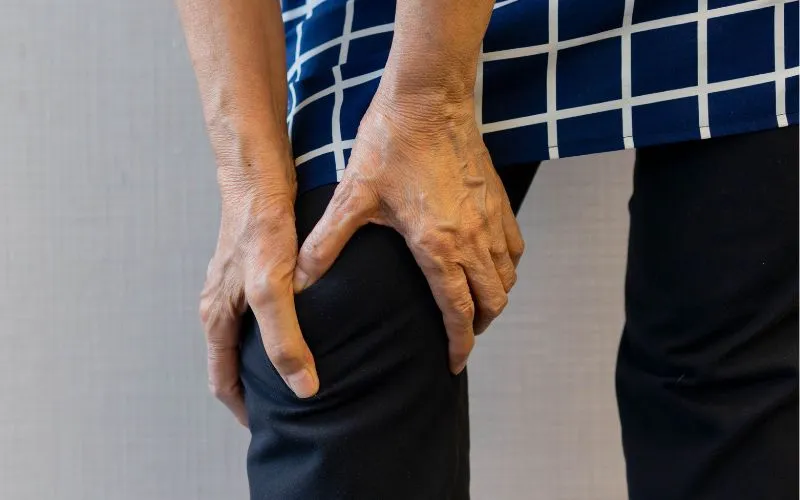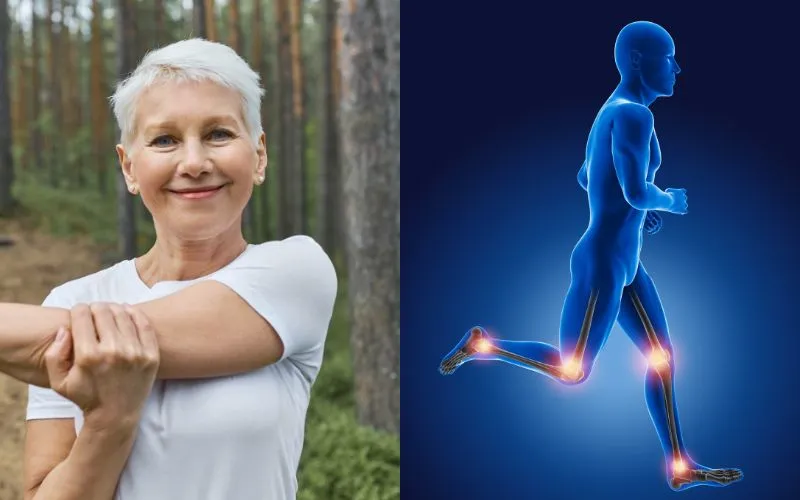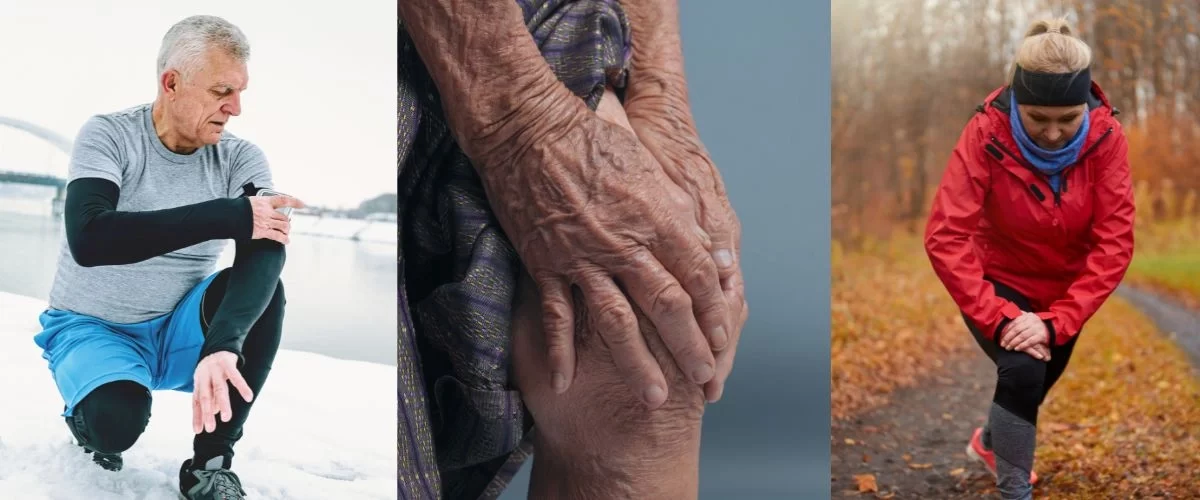Maintaining bone health after 50 is vital, especially during winter when cold weather can increase stiffness, pain, and the risk of fractures. Reduced sunlight limits vitamin D production, while icy conditions raise the chance of falls. To prevent bone aches:
- Stay warm with thermal clothing and heating pads.
- Engage in low-impact exercises like yoga or indoor walking.
- Eat calcium-rich and vitamin D-fortified foods or take supplements.
- Stay hydrated to keep joints lubricated.
- Wear non-slip shoes and clear icy pathways to prevent falls.
- Schedule regular bone density tests and consult your doctor for tailored advice.
By adopting these strategies, you can keep your bones strong, reduce pain, and stay active throughout the winter season.
Bone health is crucial for maintaining a healthy and active lifestyle throughout your lifetime. In addition to storing essential minerals like calcium and phosphorus, bones provide structure, connect muscles, and protect vital organs. Preserving bone health becomes increasingly important as we age, as declining bone density can lead to osteoporosis and fractures.
Bone Health and the Winter Season

Winter can pose unique challenges for bone health, especially for individuals predisposed to osteoporosis or joint pain. Cold weather often makes bones and joints stiff, leading to discomfort and pain. However, preventive measures can help alleviate seasonal discomfort and maintain bone health.
Why Does Cold Weather Affect Bone Health After 50?

Cold weather has long been associated with that familiar “chill in your bones,” which can become more pronounced as we age, particularly after 50. As temperatures drop, several factors contribute to increased discomfort and a greater risk of bone-related issues. Understanding these challenges is the first step toward implementing effective solutions that not only alleviate discomfort but also help you avoid common mistakes that harm your bone health.
By identifying the root causes, such as reduced vitamin D production, joint stiffness, or lifestyle changes during winter, you can take proactive steps to maintain your bone strength and overall well-being. Let’s explore these challenges in detail to better understand how to safeguard your bones during colder months.
1. Reduced Vitamin D Production
During winter, shorter daylight hours and limited sunlight exposure lead to decreased production of vitamin D. This essential nutrient plays a crucial role in calcium absorption, which is vital for maintaining bone density and strength. Without sufficient vitamin D, bones become weaker and more susceptible to pain and fractures.
2. Joint Stiffness and Cold Temperatures

Cold weather causes muscles, tendons, and joints to contract, reducing flexibility and increasing stiffness. For individuals over 50, this can exacerbate arthritis symptoms and lead to discomfort in weight-bearing joints, such as the knees and hips.
3. Reduced Physical Activity
The drop in temperature often discourages outdoor exercise and physical activity, leading to muscle weakness and joint immobility. Inactive muscles place additional strain on bones, potentially leading to pain and discomfort.
4. Increased Risk of Falls
Icy and slippery conditions during winter raise the likelihood of falls, especially for older adults with reduced balance or mobility. Falls can result in fractures or injuries, which are harder to recover from with age.
5. Dehydration
People tend to drink less water during colder months, leading to mild dehydration. Dehydration reduces joint lubrication, which can increase friction and discomfort in the joints, making bone-related aches worse.
6. Chronic Conditions
Pre-existing conditions like osteoporosis, arthritis, or joint inflammation can be aggravated by colder weather. The drop in temperature often triggers flare-ups, making pain management more challenging.
Bone Health After 50

As we age, bones naturally lose density, increasing the likelihood of fractures and conditions like osteoporosis. Maintaining bone health after 50 is essential for ensuring mobility, independence, and overall well-being.
Strong bones provide the foundation for an active and confident lifestyle. By adopting preventive strategies, you can manage discomfort, reduce fracture risks, and enjoy a vibrant and fulfilling golden age.
7 Ways to Prevent Bone Aches in Winter

Understanding the causes of winter-related bone aches is just the first step. Now, let’s explore actionable solutions to help you maintain better bone health after 50. These strategies are designed to not only alleviate existing discomfort but also prevent future issues, empowering you to enjoy an active and pain-free lifestyle even during the colder months. By making small, consistent changes to your daily routine, you can strengthen your bones, reduce aches, and stay mobile regardless of the weather.
1. Dress Warmly to Protect Your Joints
Layer up with thermal clothing, gloves, and thick socks to keep your body warm and protect your joints from the cold. Using scarves and hats can also prevent heat loss. Incorporate heating pads or warm baths into your routine to promote blood circulation and ease stiffness.
2. Stay Physically Active
Engage in low-impact exercises such as yoga, Pilates, or indoor walking to keep your joints flexible and your bones strong. Regular stretching routines can help reduce tightness and improve mobility. Aim for 30 minutes of activity daily to boost circulation and maintain overall bone health.
3. Boost Your Diet with Bone-Friendly Nutrients
Include calcium-rich foods like dairy products, fortified cereals, and leafy greens in your diet. Since winter limits sunlight exposure, ensure sufficient vitamin D intake through fatty fish, eggs, or supplements. Adding anti-inflammatory foods like turmeric, nuts, and omega-3-rich salmon can further reduce joint inflammation and pain.
4. Stay Hydrated
Drink plenty of water to keep your body and joints well-lubricated. Even mild dehydration can worsen joint discomfort. To make hydration more appealing during cold weather, opt for warm beverages like herbal teas or soups.
5. Prevent Falls with Safety Measures
Wear non-slip shoes with good traction to navigate icy or slippery surfaces confidently. Use handrails on stairs, clear pathways of snow and ice, and place non-slip mats in your home. Simple adjustments like these can significantly reduce the risk of falls and fractures.
6. Schedule Regular Bone Health Checkups
Consult your Orthopedic Doctor to monitor your bone density and detect any changes early. Bone density tests can help assess your risk of osteoporosis or fractures. Discuss personalized treatment plans or supplements if needed, ensuring you take proactive steps to maintain strong bones.
7. Manage Pain Effectively

Runner crouching on a forest pathway, gripping his knee with redness around the joint, emphasizing the importance of stretching to prevent bone aches in cold weather
Consider massage therapy to improve blood flow and relax tense muscles. Apply warm compresses to alleviate localized stiffness. Include anti-inflammatory foods and supplements in your diet to reduce chronic pain and inflammation naturally. If necessary, consult a healthcare provider for additional pain management strategies.
Winter Nutrition for Bone Health
- Vitamin D: Supports calcium absorption; consider fortified foods or supplements in winter.
- Calcium: Found in dairy, leafy greens, and nuts; vital for maintaining bone strength.
- Anti-inflammatory Foods: Include fatty fish, nuts, and turmeric to reduce inflammation and ease joint pain.
Stay Active Without Straining Your Joints
- Engage in indoor strength training or yoga to improve bone density and flexibility.
- Take short, low-impact walks to keep joints mobile without overexertion.
Maintaining strong bones during winter requires a balanced approach, combining healthy eating, regular exercise, and preventive care. Boost vitamin D levels through supplements or fortified foods to aid calcium absorption. Incorporate calcium-rich foods such as leafy greens and dairy products into your meals. Stay active with low-impact activities like yoga or indoor walking to enhance flexibility and bone strength.
Protect your joints with warm clothing and use heating pads to ease stiffness. Prevent falls by wearing non-slip shoes and clearing icy pathways. Stay hydrated to keep joints lubricated and reduce discomfort. Regular bone density tests and consultations with a healthcare provider can ensure your bones remain healthy and strong. By following these steps, you can enjoy an active, pain-free winter season.


